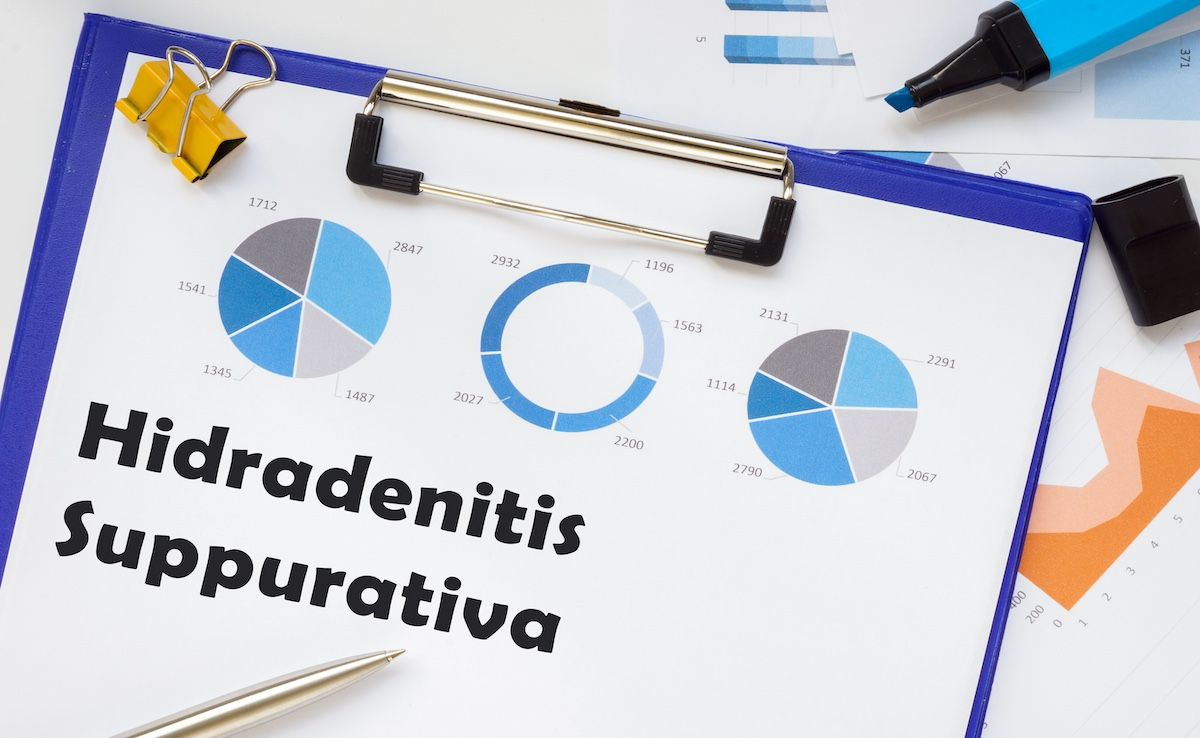
Their analysis of data on patients living with the chronic inflammatory skin disease hidradenitis suppurativa produced mixed results, leading investigators to conclude that the condition may be underdiagnosed and actually produce higher disability rates among individuals classified at a lower socioeconomic status.
Publishing their findings in Journal of The American Academy of Dermatology, they highlight that although some of their data show higher rates of hidradenitis suppurativa in women and persons with skin of color, individuals reporting Hispanic ethnicity did not demonstrate a greater risk of having the condition,1and they saw a lower prevalence of it among people who were uninsured and unemployed, and who had a lower ultimate education level. These findings echo the heterogeneity of previous research that there are higher rates of hidradenitis suppurativa in individuals who are Black vs Hispanic,2while potentially confirming data on a positive correlation between lower socioeconomic status and higher risk of hidradenitis suppurativa.3The authors attribute say this latter finding “may reflect an underdiagnosis because of reduced health care access in these populations.”
Using data from the All of Us database from the National Institutes of Health, they conducted a cross-sectional analysis of the controlled tier version 7 data set. To be included in this investigation, patients (n = 1653) had to have demographic data linked with their electronic health record, and then they were stratified based on HS diagnosis code. Their characteristics were compared against populations who did not have hidradenitis suppurativa (n = 285,359) via χ² tests, and univariate (age) and multivariate logistic regression facilitated risk estimation.
In this investigation, risk for hidradenitis suppurativa was compared according to demographic and socioeconomic characteristics. | Image Credit: Yurii Kibalnik-stock.adobe.com

The Findings
More individuals in the non–hidradenitis suppurativa cohort were White (53.97% vs 40.04%) or Hispanic (16.63% vs 13.67%), while more of those with hidradenitis suppurativa were Black/African American (37.81 vs 20.19%) (P < .001). Also, more of the hidradenitis suppurativa cohort was 65 years or younger (88.74% vs 68.63%; P < .001), female (78.7% vs 59.61%) or nonbinary (1.51% vs 0.68%) (P < .001), reported a not straight sexual orientation (13.97% vs 8.57%; P < .001), reported a female sex assigned at birth (79.79% vs 59.95%; P < .001), had less than a college degree (60.49% vs 45.1%), had an annual income below $25,000 (39.8% vs 25.98%; P < .001), and were disabled (12.4% vs 9.51%; P < .001).
From these data, the authors saw greater risks of hidradenitis suppurativa that ranged from 1.53 to 3.74 in the age-adjusted model and 1.18 to 2.03 in the multivariable-adjusted model.
More of the cohort with hidradenitis suppurativa also had a history of smoking, which the authors defined as having smoked more than 100 cigarettes in a lifetime, compared with those who did not (50.39% vs 39.86%; P < .001), and had used e-cigarettes (26.07% vs 15.11%; P < .001), marijuana (14.82% vs 7.75%; P < .001), hookah (22.62% vs 16.35%; P < .001), or cigars (35.57% vs 35.44%; P = .016). These findings translated into higher ORs of having hidradenitis suppurativa that ranged from 1.00 to 1.71 in the age-adjusted model to 1.06 to 1.51 in the multivariable-adjusted model.
Patients with lower ORs of hidradenitis suppurativa were those who reported being uninsured (0.52 in the age-adjusted model and 0.74 in the multivariable-adjusted model) and older than age 65 (0.27 and 0.36, respectively), the authors pointed out.
Strengths/Limitations
The authors note that although their small sample size and that the All of Us database does not represent the entirety of the US population may limit generalizability, theirs is one of the few studies to see higher odds of hidradenitis suppurativa linked to e-cigarette and hookah use.
“The underlying pathophysiology is likely similar to smoking,” they wrote. “Nicotine/tobacco may promote proinflammatory cytokine release and keratinocyte, fibroblast, and immunocyte activation.”
Overall, they concluded, “Timely identification of susceptible populations can decrease diagnostic delay, facilitate early treatment, and guide preventive and screening initiatives.”
References
1. Pathak GN, Makkar T, Pathak SS, Razi S, Wassef C. Demographics and lifestyle factors of patients with hidradenitis suppurativa: an All of Us database analysis. JAAD Int. 2024;17:67-70. doi:10.1016/j.jdin.2024.08.002
2. Sachdeva M, Shah M, Alavi A. Race-specific prevalence of hidradenitis suppurativa. J Cutan Med Surg. 2021;25(2):177-187. doi:10.1177/1203475420972348
3. Deckers IE, Janse IC, van der Zee HH, et al. Hidradenitis suppurativa (HS) is associated with low socioeconomic status (SES): a cross-sectional reference study. J Am Acad Dermatol. 2016;75(4):755-759.e1. doi:10.1016/j.jaad.2016.04.067




